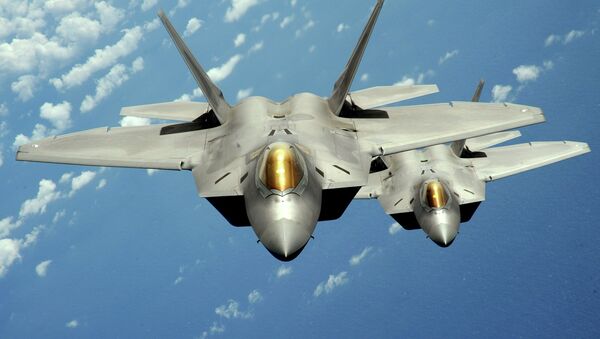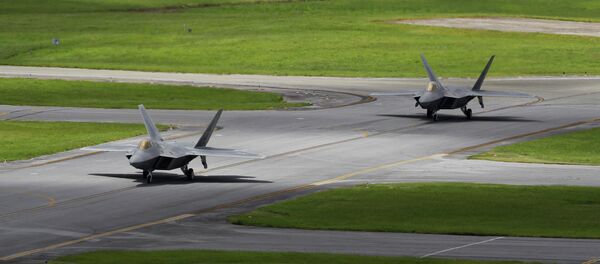Air Force Secretary Deborah Lee James made clear during an August 24 press conference at the Pentagon that the Raptor’s “inaugural” deployment to Europe was designed to send a signal to Russia, Defense News reported on Monday.
“This inaugural Raptor training deployment is the perfect opportunity for these advanced aircraft to train alongside other US Air Force aircraft, joint partners, and NATO allies,” General Frank Gorenc, US Air Forces in Europe and Air Forces Africa commander, said in the statement.
The training is designed to prove that fifth-generation fighter jets can successfully deploy to European bases and other NATO installations, as well as familiarize pilots with the regional theater.
The deployment also will give the US planes a chance to conduct combat air training with different US and European jets, such as the Eurofighter Typhoon.
Meanwhile, two F-22 fighter jets arrived in Poland on Monday to carry out combat air exercises for a day with the Polish Air Force.
Even though widely trumpeted by the Pentagon as the best fighter plane around, the F-22 Raptor has seen a string of setbacks since it first took to the skies in 1990.
During its 2008 world premiere at Farnborough the Raptor failed to match aerobatics easily performed by Russia’s fourth generation Su-30MK and even the good old Su-27.
According to a new report published in the latest edition of Combat Aircraft Monthly, the state-of-the-art jet has failed missions that put it up against the Eurofighter Typhoon, a simpler aircraft utilized by German pilots.
The report suggested that in terms of close-range, one-on-one combat, the $140 million F-22 failed to outmaneuver its German competitor.
Many Russian test pilots believe that in terms of technical features, the much-hyped F-22В has virtually no edge over Russia’s 4+++ generation fighters.
The Raptors’ production was recently put on hold due to their exorbitant price tag and unreliability.



